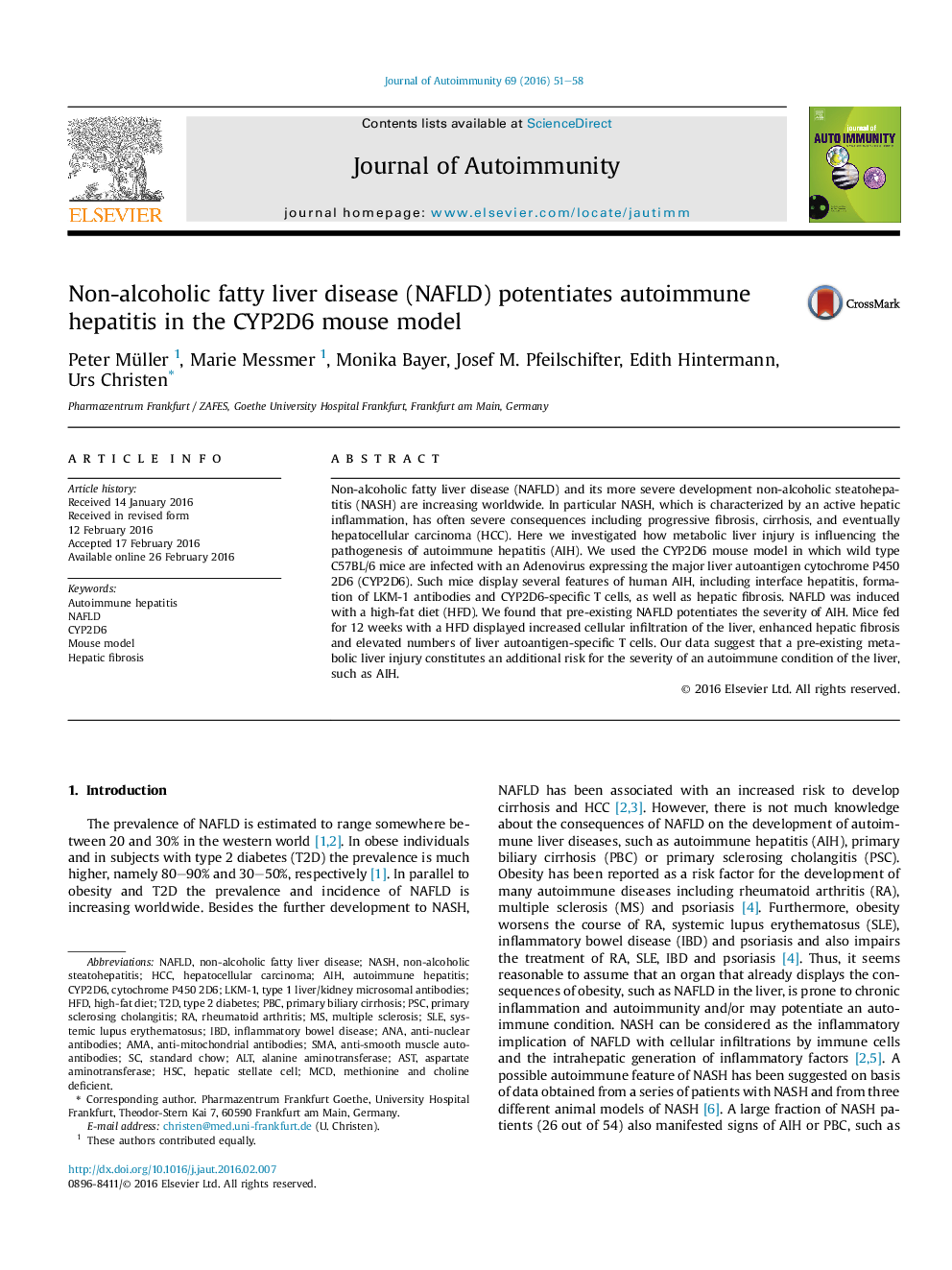| Article ID | Journal | Published Year | Pages | File Type |
|---|---|---|---|---|
| 3367666 | Journal of Autoimmunity | 2016 | 8 Pages |
•AIH is exacerbated in mice with NAFLD.•Infected NAFLD mice have enhanced liver damage, cellular infiltrations, and fibrosis.•AIH exacerbation is associated with an elevation in liver CYP2D6-specific T cells.
Non-alcoholic fatty liver disease (NAFLD) and its more severe development non-alcoholic steatohepatitis (NASH) are increasing worldwide. In particular NASH, which is characterized by an active hepatic inflammation, has often severe consequences including progressive fibrosis, cirrhosis, and eventually hepatocellular carcinoma (HCC). Here we investigated how metabolic liver injury is influencing the pathogenesis of autoimmune hepatitis (AIH). We used the CYP2D6 mouse model in which wild type C57BL/6 mice are infected with an Adenovirus expressing the major liver autoantigen cytochrome P450 2D6 (CYP2D6). Such mice display several features of human AIH, including interface hepatitis, formation of LKM-1 antibodies and CYP2D6-specific T cells, as well as hepatic fibrosis. NAFLD was induced with a high-fat diet (HFD). We found that pre-existing NAFLD potentiates the severity of AIH. Mice fed for 12 weeks with a HFD displayed increased cellular infiltration of the liver, enhanced hepatic fibrosis and elevated numbers of liver autoantigen-specific T cells. Our data suggest that a pre-existing metabolic liver injury constitutes an additional risk for the severity of an autoimmune condition of the liver, such as AIH.
Graphical abstractFigure optionsDownload full-size imageDownload as PowerPoint slide
